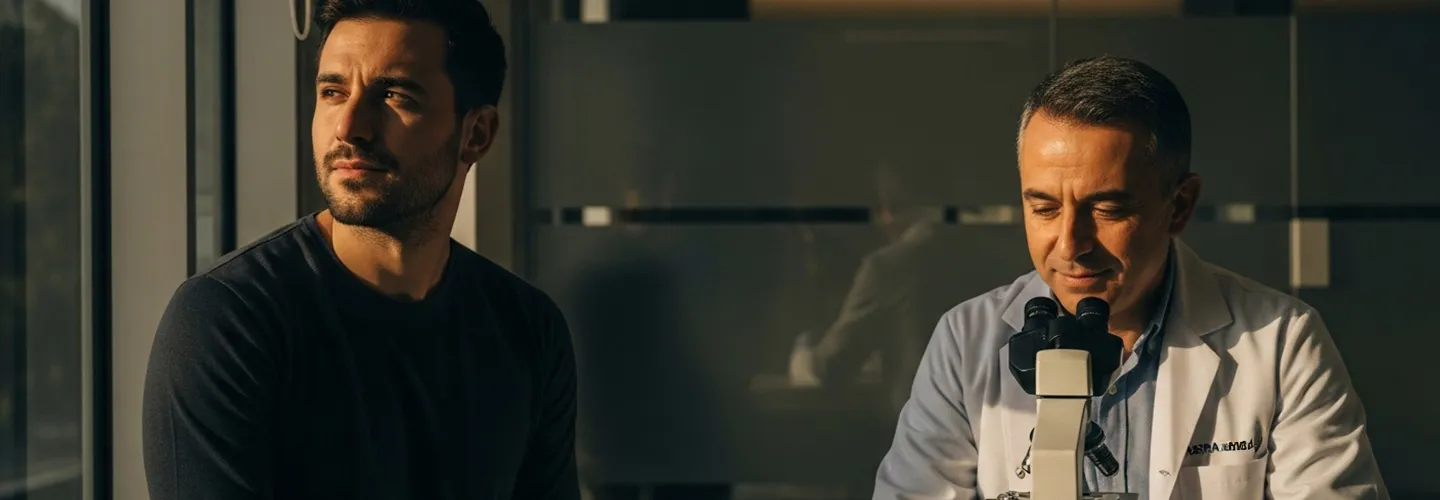Azoospermia and Micro-TESE. Why a Second Attempt Could Change Your Life

Azoospermia and Micro-TESE: Why a Second Attempt Could Change Your Life
Finding out there’s no sperm in your ejaculate? Yeah, that’s azoospermia, and it can feel like a huge setback if you’re trying to have kids. But after working with couples facing infertility for years, I’ve learned it’s more like the start of a new path, not a dead end.
With advanced methods like micro-TESE (a surgery to get sperm from the testicles), folks dealing with non-obstructive azoospermia actually have a good chance at fatherhood. And sometimes, if the first try doesn’t work, doing a second micro-TESE at the right time can do the trick.
Understanding Azoospermia
Azoospermia, where there’s no sperm in your semen, affects about 1% of all guys and up to 10% of guys who can’t have kids. Basically, it means two semen tests came back with zero sperm. There are a few reasons why this happens:
- Obstructive azoospermia: Your body makes sperm just fine, but something’s blocking it from getting out. This could be from a vasectomy or a birth defect.
- Non-obstructive azoospermia (NOA): Here, the issue is that your body isn’t making enough sperm due to genes or something else you picked up along the way.
But here’s the thing: just because you have azoospermia doesn’t mean there’s no sperm in your testicles. Sometimes, there are still little spots where sperm is being made, and doctors can grab those sperm with surgery.
TESE vs. Micro-TESE
Conventional TESE
Conventional TESE involves taking random small biopsies from the testes to look for sperm. While useful, it is a blind procedure. Reported sperm retrieval rates in NOA range from 30–50 %.
Micro-TESE (Microsurgical TESE)
Micro-TESE uses a microscope during the procedure to find and take out the best tubules, all while keeping the testicle tissue safe.
Research shows that micro-TESE gets sperm about 45–50% of the time, which is better than TESE. Plus, there’s less of a drop in testosterone after the surgery.
Clinical guidelines such as the AUA/ASRM Male Infertility Guideline (2024) recommend micro-TESE as the preferred method for men with NOA.
This is supported by the Global Andrology Forum consensus and the Cochrane Library review on sperm retrieval techniques.
When the First Attempt Fails: Why a Second Micro-TESE Can Succeed
A failed first micro-TESE is discouraging but not the end of the road.
-A 2023 narrative review (PMC12112926) showed sperm retrieval in 10–21 % of second attempts, and up to 42 % in select cases (especially in men with hypospermatogenesis or Klinefelter syndrome).
-The study Predictors of Sperm Retrieval Success in First-time and Repeated Micro-TESE confirmed these trends and highlighted the importance of histology and testicular volume. (PMC12128663)
-Ramasamy et al. (Journal of Urology, 2011) published Successful Repeat Microdissection Testicular Sperm Extraction reporting sperm retrieval in previously negative patients.
-A 2025 meta-analysis in Andrology Journal confirmed overall retrieval success between 10–30 %, depending on patient factors.
Factors That Influence Success
-Histopathology: hypospermatogenesis > maturation arrest > Sertoli-cell-only
-Genetics: Klinefelter syndrome patients show moderate chances (~50 %), whereas AZFa/b microdeletions predict poor outcomes.
-Testicular volume and hormones: larger volume and balanced FSH/LH predict better results.
-Surgical experience: success correlates strongly with surgeon expertise.
-Interval between surgeries: most authors recommend ≥ 6 months between micro-TESEs.
Recent research by MDPI (Cells, 2024) also emphasizes the prognostic value of histopathology and etiology.
Preparing for a Second Micro-TESE
- Comprehensive reassessment: hormonal, genetic and imaging evaluation
- Optimize lifestyle: quit smoking, reduce weight, manage stress
- Address varicocele or hormonal imbalance if present
- Plan cryopreservation: freeze any retrieved sperm to avoid repeated surgery
- Emotional support: counseling helps couples cope during uncertain stages
For a detailed overview of tests before IVF, visit
Pre-IVF Testing – draksoyivf.com
Frequently Asked Questions (FAQs)
🕐 How long should I wait before another micro-TESE?
Most experts suggest 6–12 months between surgeries for tissue recovery.
📈 What are the chances of finding sperm the second time?
Success ranges 10–30 % depending on histology and genetics (PMC12112926).
💊 Will testosterone drop after repeat micro-TESE?
Usually temporary; micro-TESE removes less tissue than TESE, minimizing risk.
💬 What if no sperm are found again?
Discuss alternative family-building options such as donor sperm or adoption. Emotional well-being is just as important as biological parenthood.
Recommended Scientific References
-AUA/ASRM Guideline: Diagnosis and Treatment of Infertility in Men (2024)
-Global Andrology Forum Consensus Statement on Micro-TESE (2025)
-Cochrane Library Review – Surgical Sperm Retrieval in NOA
-PMC12112926 – Repeat Micro-TESE Success Meta-analysis
-PMC12128663 – Predictors of Sperm Retrieval Success in Repeated Micro-TESE
-MDPI Cells, Vol 13, No 18 (2024)
Related Internal Links
-Sperm Retrieval in Azoospermic Subjects
-Embryo Transfer
-Embryo Freezing
Legal Notice and Update Date
Last updated: October 17, 2025
Disclaimer:
This article is for educational purposes only. It does not replace personalized medical advice, diagnosis, or treatment. Always consult your fertility specialist before making medical decisions. The author and publisher accept no liability for consequences arising from reliance on the information herein.
The content has been created by Dr. Senai Aksoy and medically approved.

